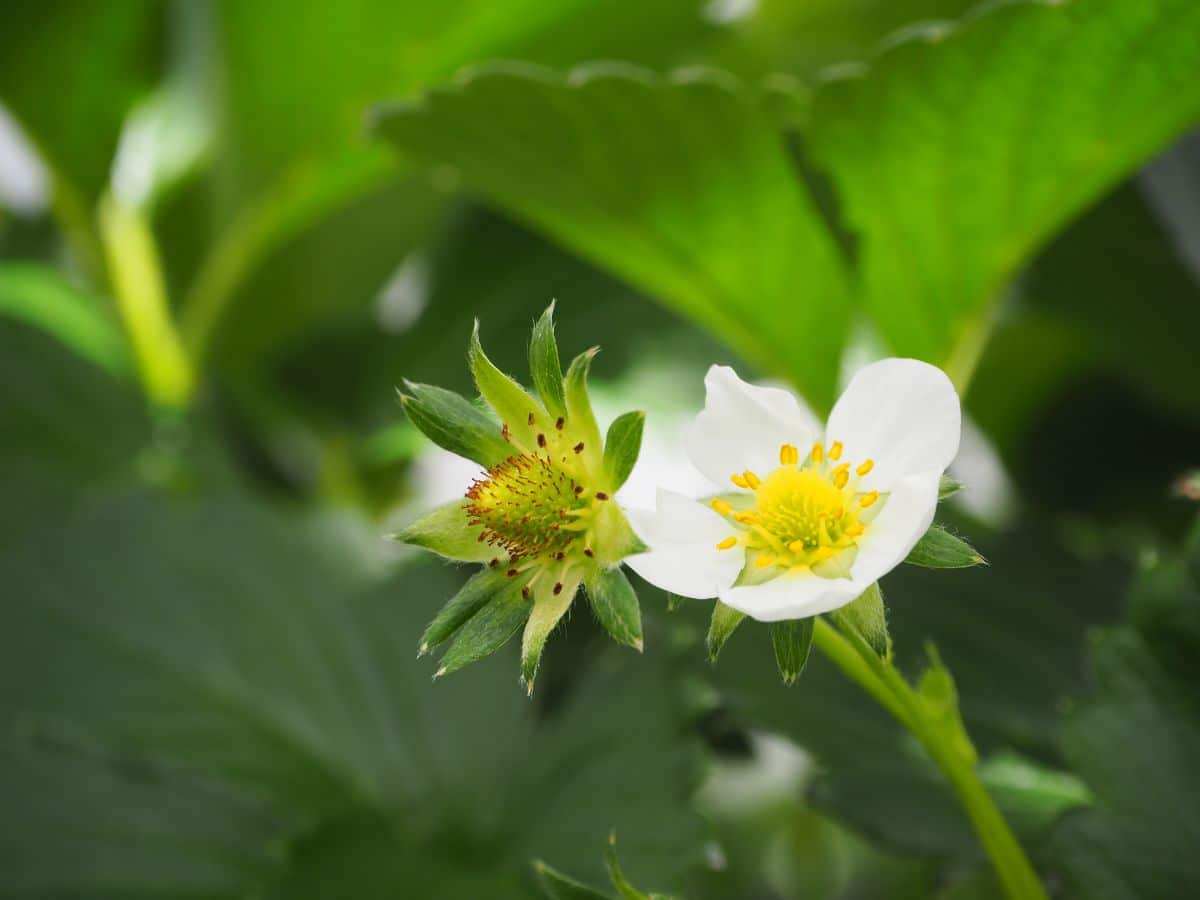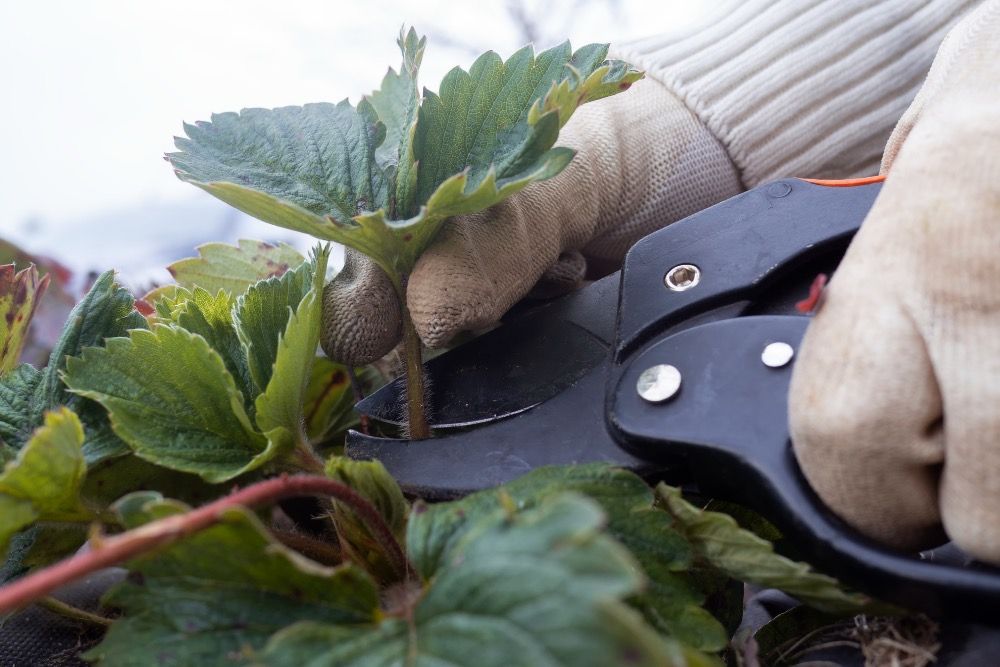As a strawberry grower, you’ve likely noticed those bright white flowers blooming on your plants in spring. But should you leave them be or cut them off? There’s good reason behind removing some or all of the blossoms. Let’s take a closer look at why cutting flowers boosts fruit production.
Why Cut Off Flowers?
It may seem counterintuitive, but pruning flowers actually helps strawberries bear more fruit Here’s why
-
The plant has limited energy and nutrients to spend on growth. By removing some flowers you ensure the remaining ones get fully pollinated and develop into large, tasty berries.
-
Overcrowding causes small, misshapen fruit. Thinning out excessive blooms prevents the strawberry patch from becoming congested.
-
Disease prevention is crucial. Getting rid of dead or dying blossoms limits the spread of fungus and rot.
-
Flower removal extends the harvest. Pinching off early blooms delays fruiting so you enjoy fresh strawberries over a longer period.
When to Remove Flowers
Timing is everything when it comes to cutting flowers. Follow these guidelines:
-
Pinch off the first blossoms when they appear in early spring. This will stimulate vegetative growth and runner production.
-
For June-bearing varieties, remove all flowers until mid-spring. Let a few fully develop after that so pollination can occur.
-
With everbearing types, allow 4-5 blooms per plant in early spring. Pinch off new flowers until midsummer, then allow them to develop for the fall crop.
-
Deadhead spent blooms throughout the season to divert energy into ripening fruit.
-
Stop removing flowers by mid-August so plants can harden off for winter.
How to Cut Flowers
Use these steps to properly thin blossoms:
-
Wait until flowers are completely dry before removing them. Pinching wet blooms may damage the plant.
-
Use clean, sterilized scissors or garden shears. Make cuts on a 45 degree angle just above the flower stem.
-
Gently pinch off flowers without damaging leaves or crowns. Leaving any stem tissue can lead to rot.
-
Drop flowers directly into the trash to prevent disease spread. Don’t compost them.
-
Water plants after pruning to prevent stress and promote new growth.
-
Inspect for pests like tarnished plant bugs that can hide in flowers. Remove any seen.
Results of Removing Flowers
Here are some benefits you’ll notice after flower pruning:
-
Larger, higher quality berries. With less competition, the remaining blossoms produce bigger, tastier fruit.
-
Extended harvest period. Thinning extends flowering and fruit production over a longer window.
-
Healthier plants. Removing congested, diseased blooms prevents rot and encourages vigor.
-
Increased yields. Allowing just a few flowers to develop and pollinate results in a bountiful crop.
-
Easy maintenance. Deadheading spent blossoms keeps plants tidy and free of disease.
Special Considerations
Follow these tips for best results:
-
Know your variety. June-bearers and everbearers have slightly different pruning needs. Follow guidelines accordingly.
-
Don’t overthin. Leave some flowers in spring for pollination and fruit set. About 5 blooms per plant is sufficient.
-
Be consistent. Check plants every few days and remove new blossoms so they don’t take resources from developing berries.
-
Adjust for climate. In hot climates, wait until a bit later in spring to thin flowers so fruit has time to mature before summer heat.
-
Consider stage of growth. Prune lightly on young or stressed plants. Established, healthy plants can handle more aggressive thinning.
-
Stop deadheading by mid to late summer so plants harden off for dormancy.
Should You Cut Off Flowers?
Removing strawberry blossoms takes some time upfront, but pays off all season long. The tradeoff of bigger, better fruit is well worth the effort. Just be sure to follow best practices based on variety and plant health. With the right technique, cutting flowers results in an abundant strawberry harvest!
Frequently Asked Questions
How many flowers should I leave on each plant?
Leave about 4-5 flowers per healthy, established June-bearing plant in spring. For everbearers, allow 4-5 blooms in early spring and again in midsummer. Remove the rest to promote large, high quality fruit.
Can too much flowering damage strawberry plants?
Yes, allowing excessive blooms to develop crowds the plant and results in small, rot-prone fruit. It also diverts energy from runners and crown growth. Moderately thinning flowers prevents overbearing.
Is it better to cut or pinch flowers off?
Use clean gardening shears or scissors to slice flower stems on an angle just above the crown. Pinching can damage the crown if done improperly. Cutting provides a clean removal.
What’s the downside to leaving all flowers in place?
Allowing all flowers to develop overwhelms the plant, leading to disease, stunted growth, and low quality yields. Removing some blossoms is essential for plant health and fruit production.
Can I remove flowers from first year plants?
Remove all flowers from new June-bearing plants their first spring. This allows them to focus on vegetation and runner development. Thin lightly on young everbearers, leaving 4-5 blooms.
Written by John Matthews, gardening expert
Origins of Strawberry Flowers
Strawberry flowers have an interesting life. Different types of strawberry plants produce them at different times. This post will be about the flowers of the June-bearing strawberry, though, because that’s what most gardeners who grow strawberry plants want.
Strawberry plants that bear in June only have one crop, which they put out over two to three weeks in late spring or early summer (sometimes earlier), usually around June (see the Strawberry Varieties page for more information). Like most fruit, strawberries come from the delicate flowers that each strawberry plant produces. However, the small strawberry flowers that strut their stuff in the spring begin their life much earlier.
Strawberry flowers originate in the crowns of strawberry plants. The flowers start out as tiny flower buds inside a strawberry plant many months before they open and grow up. This bud formation is critical for next year’s crop and occurs after the harvest is completed. After the strawberries are picked and fixed up (see the Growing Strawberries page for more information), flower buds start to appear near the end of summer or beginning of fall.

For strawberry flowers to grow from strawberry flower buds, the plant needs to be taken care of regularly. If water is not adequate during the period of strawberry flower bud formation, fewer buds will form. Consequently, the following spring’s harvest will be significantly reduced. If you take good care of your strawberry plants, flower buds should appear, sleep through the winter, and then wake up again in the spring. And, the more flowers there are, the more fruit you can harvest!.
Should You Pick Off Flowers on Newly Planted Strawberries?
- The Ultimate Guide to Growing Strawberries in Raised Beds - August 8, 2025
- No-Dig Garden Beds: The Easiest Way to Grow a Beautiful Garden - August 6, 2025
- How to Protect and Preserve Wood for Raised Garden Beds - August 6, 2025

